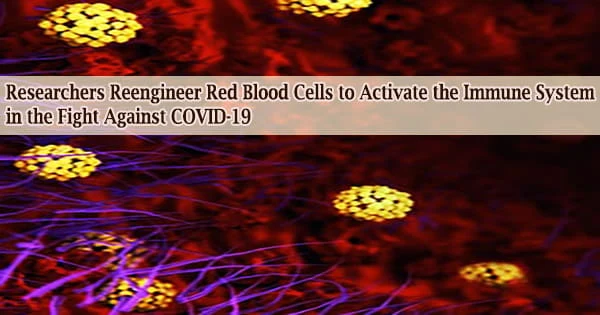McMaster University physicists, chemists, and immunologists collaborated to change red blood cells to transport viral agents that can safely trigger the immune system to protect the body against SARS-CoV-2, resulting in a promising new vaccine delivery vehicle.
According to the experts, developing new methods and vaccine technologies is important for controlling the pandemic and planning for future outbreaks as the coronavirus evolves and mutates.
The novel procedure, which was published in the journal PLOS ONE, is a first in the field of immunization. SARS-CoV-2 spike proteins are embedded in red blood cell membranes, forming virus-like particles.
“We take red blood cells and remove everything from the inside. We then attach spike proteins to their outside to mimic a coronavirus,” explains graduate student Isabella Passos-Gastaldo, a lead author on the paper.
The particles, which have been shown in mice to activate the immune system and create antibodies, are absolutely safe.
“Current vaccine delivery methods often cause drastic immune system reactions and have short-lived responses,” says Maikel Rheinstadter, a senior supervisor on the paper and a professor in the Department of Physics & Astronomy at McMaster.
“Some of the vaccines that have been developed have shown side effects. This delivery platform opens new possibilities for vaccines and therapeutics,” he says.
Current vaccine delivery methods often cause drastic immune system reactions and have short-lived responses. Some of the vaccines that have been developed have shown side effects. This delivery platform opens new possibilities for vaccines and therapeutics.
Maikel Rheinstadter
The researchers discovered that cells may be loaded with a huge quantity of viral proteins while causing few adverse effects, making the novel technique more pleasant and effective than existing vaccines.
“We have developed a method where we can trigger an immune response without the use of genetic material and yet we are able to synthesize these particles in a very short amount of time,” says Sebastian Himbert, lead author on the study and a recent graduate student in the Department of Physics & Astronomy at McMaster.
Vaccines for variations or new viruses that may appear in the future can be developed swiftly using this approach.
“This is the kind of creative, interdisciplinary research that McMaster is known for. It was exhilarating working with physicists, structural biologists and immunologists to design a radically different vaccine platform,” says Dawn Bowdish, Professor of Medicine at McMaster and Canada Research Chair in Aging & Immunity and co-author of the paper.
The researchers originally disclosed this technology in 2020, when they manipulated red blood cells to distribute medications throughout the body, which might potentially be used to cure infections or fatal diseases like cancer or Alzheimer’s.
“This platform makes our own blood cells smart in many different ways,” explains Rheinstadter. “In this case it’s a vaccine. We are using our own cells much like nano robots inside of our bodies and whenever they see a disease, they can fight it.”





